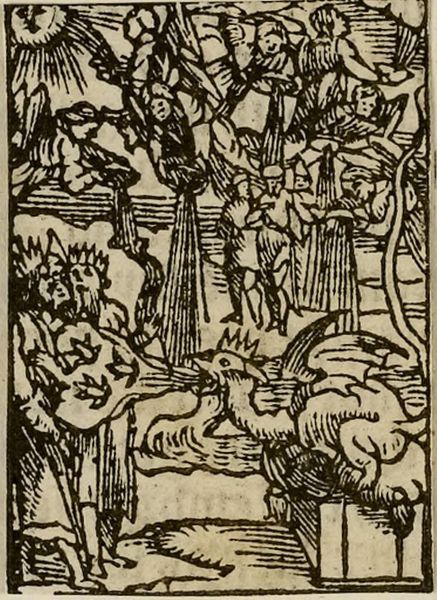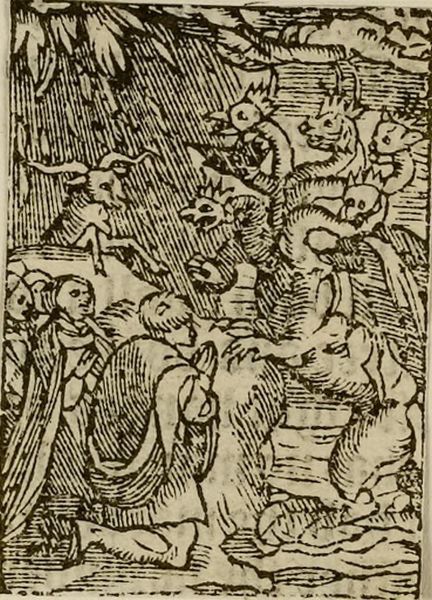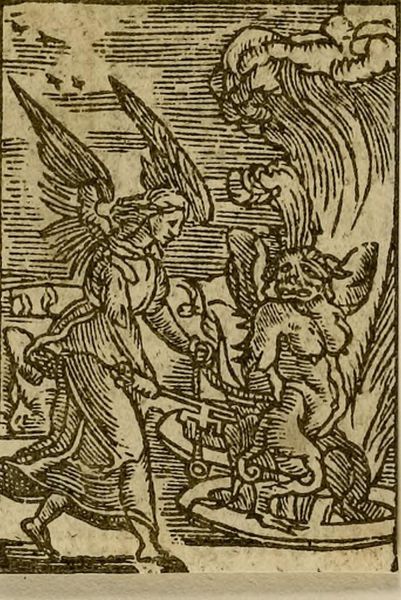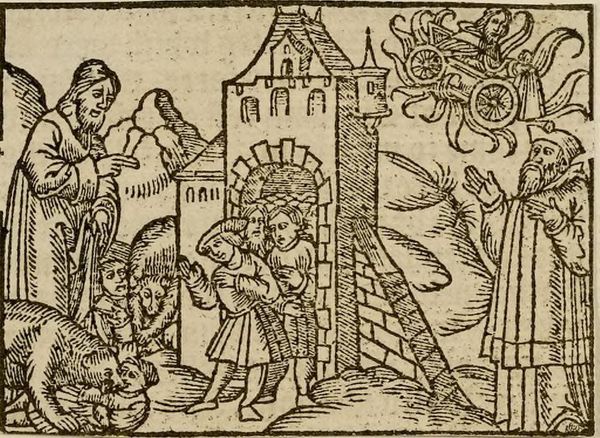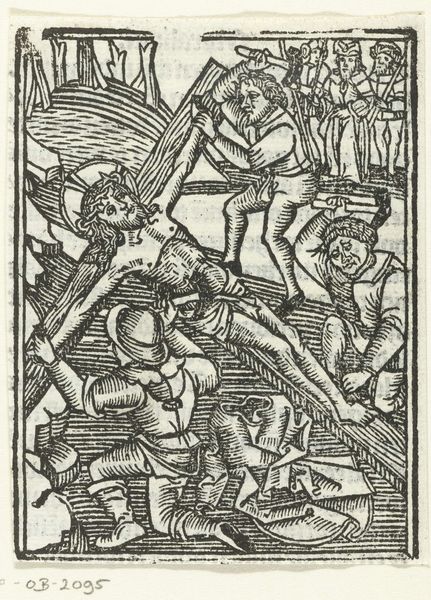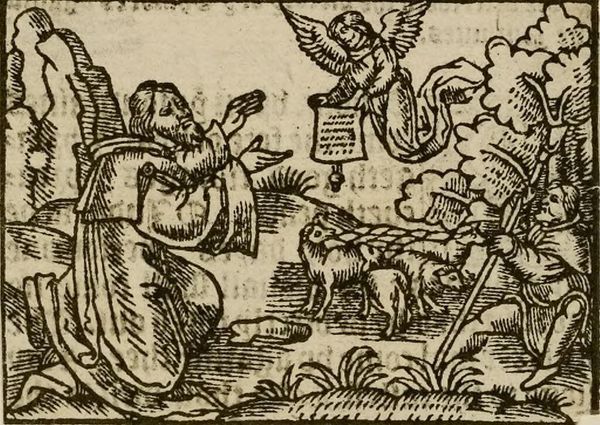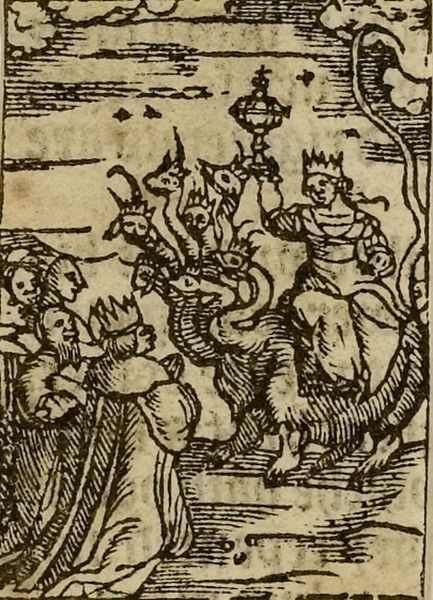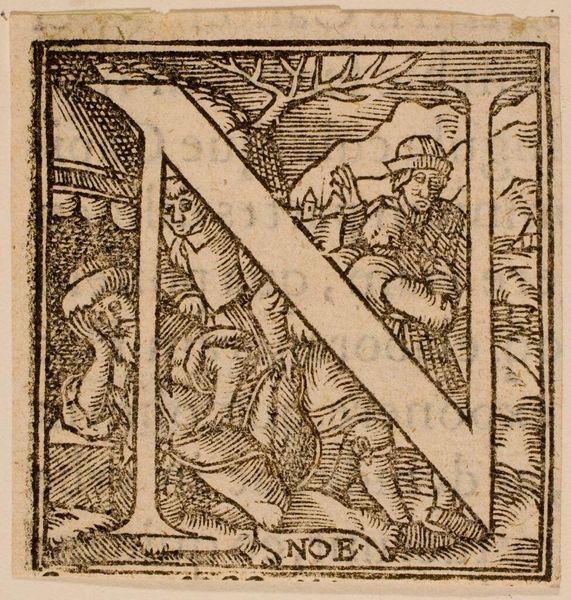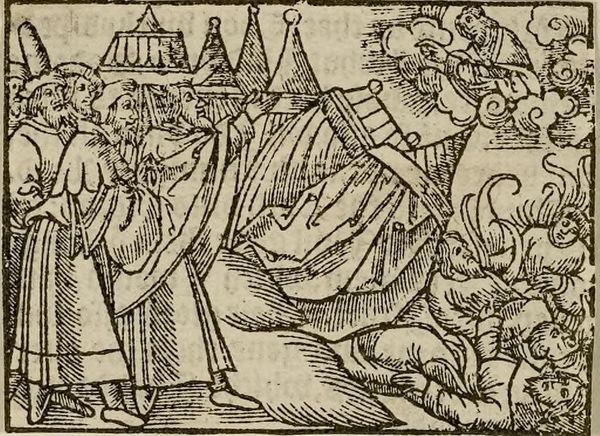
Illustration XLVIII: the 10th figure: John beholds a mighty angel whose feet are pillars of fire come down from heaven in a cloud. John eats the little book in the angel's hand (Revelation 10:1-11). c. 16th century
0:00
0:00
Copyright: CC0 1.0
Curator: Here we have "Illustration XLVIII: the 10th figure: John beholds a mighty angel whose feet are pillars of fire come down from heaven in a cloud. John eats the little book in the angel's hand (Revelation 10:1-11)", an anonymous work held at the Harvard Art Museums. Editor: It strikes me as chaotic, a swirling, densely packed composition, and the low contrast creates an intense, almost claustrophobic feeling. Curator: The density speaks to the period's fascination with detail. The print illustrates Revelation, deeply influential during times of upheaval. This scene embodies divine intervention. Editor: Indeed, the act of consuming the book has profound implications. Is it about internalizing knowledge, or is it a commentary on access to divine texts? Curator: The angel represents immense power, and John's act of eating the book given to him is a symbolic act of communion. The visual language is highly structured. Editor: I see it also as a reflection on power dynamics and religious authority, considering who had access to interpret those texts. Curator: A fitting perspective, and yet the angel’s fiery feet point upward, a visual assertion of the divine order. Editor: Yes, and the artist's rendering of a biblical moment invites us to reconsider whose interpretations are recorded. Curator: A rewarding debate, indeed, with the formal qualities enriching our understanding. Editor: The artwork's enduring relevance lies in its ability to stimulate interpretations across different historical and social contexts.
Comments
No comments
Be the first to comment and join the conversation on the ultimate creative platform.
